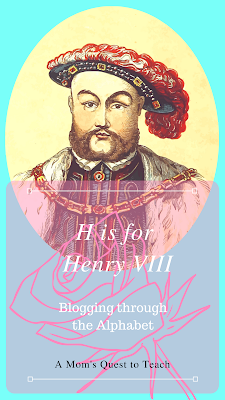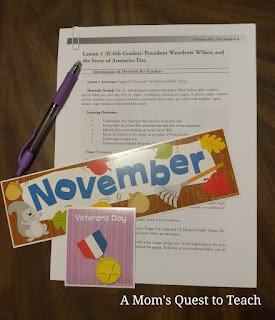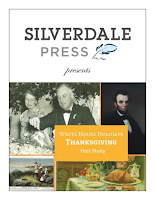In this post, I will share about another one of my favorite people to study in history – King Henry VIII. As his life is long and complicated, I will write only about his early years and the events in which Catherine of Aragon, his first wife, was alive and played an active part.
King Henry VIII of England England France England back into Europe with his conquests to
regain the portions of France
 King
Henry VIII received advice from his father, Henry VII, on his deathbed. He advised him to do three things and left
him with councilors to aid him in his ruling of the country. He wished his son to marry Catherine of
Aragon, to defend the Church against the infidels and urged him to execute
Edmund de la Pole, Earl of Suffolk, who was a traitor. Henry VIII fulfilled his father's wishes in
all three accounts. He did marry
Catherine, defend the Church, and – in the spring of 1513 – he executed de la Pole.
King
Henry VIII received advice from his father, Henry VII, on his deathbed. He advised him to do three things and left
him with councilors to aid him in his ruling of the country. He wished his son to marry Catherine of
Aragon, to defend the Church against the infidels and urged him to execute
Edmund de la Pole, Earl of Suffolk, who was a traitor. Henry VIII fulfilled his father's wishes in
all three accounts. He did marry
Catherine, defend the Church, and – in the spring of 1513 – he executed de la Pole.
After
his older brother, Prince Arthur, died, Henry's life became severely
restricted. His father was with him
almost all the time. He was never given
any real responsibility or independence for fear that he would also die and
leave the kingdom in the hands of either his sister Margaret and her husband (the King of Scotland) or his other sister, Mary (still unwed). As a youth, his education included theology, mathematics, music, and languages such as Latin, French, Italian, and probably Spanish.
On June 23, 1509, the procession that led to his coronation took
place. Henry's coronation was quite
extravagant with revels, pageants – which the newly crowned king took part in,
tilts, jousts, dancing, and music concerts. Henry soon became known as a Renaissance
Prince for he was regarded as an athlete and an intellectual – as well as a sportsman and a musician. He also took part in courtly love. Henry was described as being extremely handsome,
6 feet tall, strong, and having a desire to dress up in jewels, silks, and feathers.
Unlike
his father, Henry VIII considered the duty of the King not to make
treaties but to win victories. The nobility of England
Before Henry could lead his country
into war, he would need to secure succession to the Tudor throne. Catherine of
Aragon was left widowed upon Prince Arthur's death. A papal dispensation was needed for Henry and
Catherine's marriage to take place. If
the marriage between Catherine and Arthur had been consummated then they would
need a dispensation on the grounds of "impediment of affinity in the
first-degree collateral." If the
marriage had not been consummated, as Catherine insisted, they would need a
dispensation from the impediment of public honesty, which they did not seek.
These details would cause problems when Henry would seek divorce from Catherine
in 1527.
Henry Marries Catherine
King
Henry VIII and Catherine of Aragon were married on June 11, 1509. Whether it was his wish to obey his
father, the dispensation from the Pope, the gold of the dower, or the desire to
form strong royal bloodlines that encouraged him, it was evident that in the
early years Henry did love his Queen. At 23, Catherine was devout, pretty, and his
"lady-love." He wrote songs
for her and publicly expressed his devotion. She became pregnant shortly after their marriage, only to give birth to
a stillborn daughter in May 1510. During the early years of Henry
and Catherine's marriage, there were continuous festivities, with masks,
comedies, and revels in which Henry played parts. It was during these festivities that King Henry most probably became acquainted with ladies of the court.
Shortly after becoming king and
marrying Catherine, Henry first received a taste of war and deception when he
agreed to send aid to Ferdinand of Aragon, his father-in-law, to drive the
Moors from North Africa . Unfortunately, when the English troops arrived
there they soon discovered that Ferdinand had abandoned the plan and the
English ended up in Spain
Catherine
gave birth to Henry, Prince of Wales, on January 1, 1511, to great
celebrations. King Henry traveled on a
pilgrimage to thank "Our Lady" and began to plan an enlargement of
the court for his son and future heir. In approximately seven weeks, however, the heir had died and was buried with a
lavish funeral. In
October 1513, Catherine suffered a miscarriage. In December 1514, she gave birth to a boy who didn't survive. In February 1516, she gave birth to
Mary, who was named after her aunt. Her last pregnancy ended with
a stillborn daughter in November 1518. Even though Catherine's pregnancy years were
over there were still hopes that Henry would have a male heir. In 1519, a son (Henry Fitzroy) was born to one of Henry's mistresses, Bessie Blount. Beginning in 1526, he
began receiving titles such as Duke of Richmond and Somerset England
While
Henry was in France battling on behalf of the Holy League, Battle of the Spurs, the only open engagement in France, and the Battle of Flodden, a decisive
battle between Scotland and England
Henry said after Mary's birth, "By the
grace of God, the sons will follow." During his lifetime, the Christian viewpoint of childbirth was not
biological. Most believed that God
either passed the parents' sins onto the child or that parents were punished by
not being allowed to have any children.
So, it was very likely that Henry believed divine favor was necessary for
a successful childbirth.
Henry had begun to question why no living male heir had been born and – in
the Old Testament – he found his answer. Using Leviticus 20:21 out of context, he saw his marriage as a sin. The lack of male children was his punishment for sinning. Henry felt the
pope had no right to go against biblical law (specifically the
Levitical commandment that a man must not marry his brother's wife). Whether Leviticus referred to
seducing a living brother's wife or Henry's position, Henry was determined it
applied to his lack of male heirs by his marriage to Catherine.
On May
5, 1527, Henry met Anne Boleyn, Catherine's newest attendant. At the same time secret proceedings were
opened to judge the validity of the king's marriage to Catherine. In June, Henry decided he must
tell Catherine about the proceedings and that their marriage was never lawful
but it was too late, she had already found out.
'Great Matter'
During the summer of 1527, the imperial forces of German Holy Roman Emperor Charles V (Catherine's nephew) had sacked Rome Rome
Since
none of the pope's suggestions were to Henry's likening, Cardinal Lorenzo
Campeggio was sent to London to
investigate the King's 'great matter' and – if possible – bring the King and
Queen back together but he was to make no decision without Rome Legatine Court
Catherine only wanted the Pope to pass judgment on the case, because she felt she would
not receive a fair hearing in England
In
1530, Henry began to think about a way around what could be considered a papal obstacle. How about just denying the Pope's authority and replacing him as head of the Church in England? The same king who had been given the title Defender of the Faith from the Pope for his efforts against Martin Luther, now proposed to set himself as the head of the English Church.
In the summer of 1531, Catherine was
sent away from court. At 48 years old,
on April 9, 1533, she was told she was no longer the Queen but only the
Princess Dowager, the widow of Prince Arthur. On January 7, 1536, Catherine, whose motto as
Queen had been 'humble and loyal,' passed away with her death celebrated by her
former husband and King.
Even after years of studying the life and times of Henry VIII, I am still amazed at how much of his own biography – his own life history – is tied up with that of his wives and family members. We are never truly separate from those in our family.
If you enjoyed this post, please check out these others!
images, unless of Henry VIII from: Openclipart and WPClipart
If you make a purchase through one of these links, I may receive a small commission at no costs to you.

















































